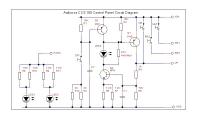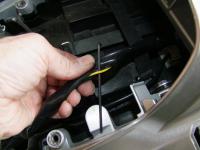canadianfjrowner
Well-known member
I've installed the Audiovox ccs100 on my '07 AE (which is a pain because of location of servo). My problem is, it won't activate. The pinout test shows everything correct except that the brown wire will not hold power when the "ON" button is pressed. According to the pin out test this wire is supposed to remain at battery voltage when the "ON" button is pushed and go to " 0" volts when to "OFF" button is pushed. All other wires show proper voltage and ground when requested. I did install the relay in the brake wire circuit to make sure that unit sees good ground. There is proper vacuum to the servo. Because the servo is below the gas tank in behind the front fork, it is hard to access and see the diode inside. Hope someone can shed some light on this. 
Thanks.
Thanks.


































































